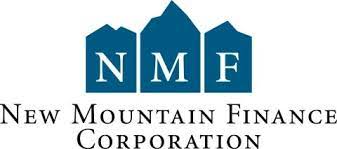/ factorpad.com / stocks / f49rqw.html
An ad-free and cookie-free website.
Our quantitative data points are meant to provide a high-level understanding of factors in equity risk models for New Mountain Finance Corp. Portfolio managers use these models to forecast risk, optimize portfolios and review performance.
We show how NMFC stock compares to 2,000+ US-based stocks, and to peers in the Finance and Insurance sector and Securities and Commodity Exchanges industry.
Please do not consider this data as investment advice. Data is downloaded from sources we deem reliable, but errors may occur.
 New Mountain Finance Corporation is a closed-end, non-diversified and externally managed investment company that has elected to be regulated as a business development company under the Investment Company Act of 1940, as amended. The Company's investment objective is to generate current income and capital appreciation through the sourcing and origination of debt securities at all levels of the capital structure, including first and second lien debt, notes, bonds and mezzanine securities. The Company's first lien debt may include traditional first lien senior secured loans or unitranche loans. Unitranche loans combine characteristics of traditional first lien senior secured loans as well as second lien and subordinated loans. Unitranche loans will expose the Company to the risks associated with second lien and subordinated loans to the extent it invests in the 'last out' tranche. In some cases, the investments may also include small equity interests. The Company's investment activities are managed by its Investment Adviser, New Mountain Finance Advisers BDC, L.L.C., which is an investment adviser registered under the Investment Advisers Act of 1940, as amended.
New Mountain Finance Corporation is a closed-end, non-diversified and externally managed investment company that has elected to be regulated as a business development company under the Investment Company Act of 1940, as amended. The Company's investment objective is to generate current income and capital appreciation through the sourcing and origination of debt securities at all levels of the capital structure, including first and second lien debt, notes, bonds and mezzanine securities. The Company's first lien debt may include traditional first lien senior secured loans or unitranche loans. Unitranche loans combine characteristics of traditional first lien senior secured loans as well as second lien and subordinated loans. Unitranche loans will expose the Company to the risks associated with second lien and subordinated loans to the extent it invests in the 'last out' tranche. In some cases, the investments may also include small equity interests. The Company's investment activities are managed by its Investment Adviser, New Mountain Finance Advisers BDC, L.L.C., which is an investment adviser registered under the Investment Advisers Act of 1940, as amended.
Many of the following risk metrics are standardized and transformed into quantitative factors in institutional-level risk models.
Rankings below represent percentiles from 1 to 100, with 1 being the lowest rating of risk.
Stocks with higher beta exhibit higher sensitivity to the ups and downs in the market. (↑↑)
Stocks with higher market capitalization often have lower risk. (↑↓)
Higher average daily dollar volume over the past 30 days implies lower liquidity risk. (↑↓)
Higher price momentum stocks, aka recent winners, equate to lower risk for many investors. (↑↓)
Style risk factors often include measures of profitability and payout levels.
Companies with higher earnings generally provide lower risk. (↑↓)
Companies with higher dividend yields, if sustaintable, are perceived to have lower risk. (↑↓)
/ factorpad.com / stocks / f49rqw.html
A newly-updated free resource. Connect and refer a friend today.